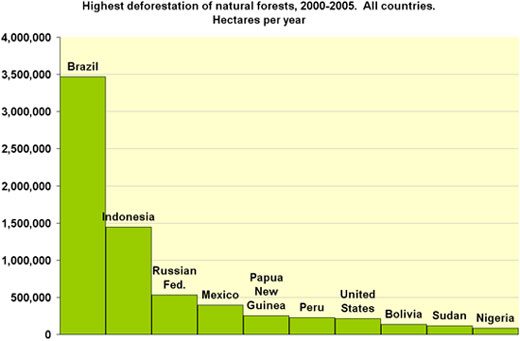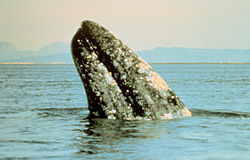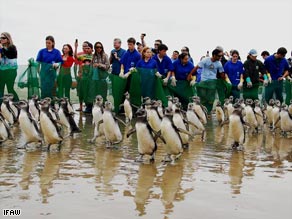
Just to clarify a couple of questions from the last lecture, both area related. For your convenience: a hectare is 100m x 100m (2 football fields side by side) and so there are 100 hectares per km2. There are about 2.5 acres in a hectare.
1/ I haven't exactly placed the US on the forest loss/preservation graph yet but I've found some recent, and very interesting, reports. Here are the links followed by some relevant statistics. I also re-read the Dinnerstein and Wikramanayake paper (D+W) (to see their exact criteria) and if you are interested it is a good read: Beyond Hotspots: How to Prioritize Investments to Conserve Biodiversity in the Indo-Pacific Region.
Useful Reports on Global Forest Resources and Deforestation
- The Global Forest Resources Assessment 2005 compiled by the Food and Agricultural Organization of the United Nations.
- Land use changes involving forestry in the United States: 1952 to 1997, with projections to 2050. by the U.S. Department of Agriculture, Forest Service, Pacific Northwest Research Station.
- Between 2000 and 2005, the United States lost an average of 215,200 hectares of "primary forest" per year. D+W extrapolated current rates of primary forest loss to give their estimated 10 year loss rate. This would give the US a predicted 10 year loss of 2.1 million hectares.
- In absolute terms this gives the United States the seventh largest annual loss of primary forests in the world, ranking it the worst among wealthy countries. However in terms of % loss this change is less dramatic.
- There are approximately 300 million hectares of forest in the US but only about 100 million of this is primary forest.
- 6o million hectares of forest is protected for conservation in the US. If we assume that all this is primary forest then that leaves 40 million hectares of unprotected primary forest.
2/ Maybe I misspoke but I think the figures I gave on land surface area and conservation plans in Madagascar were correct.
- Madagascar is 587,000 km2 or ~60 million hectares.
- Currently about 1.8 million hectares are in reserves (about 5 million acres)
- Plans are to triple this to over 5.5 million hectares (about 15 million acres) or about 10% of the land surface area.




























